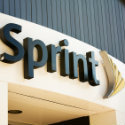As Light Reading first reported, Sprint will beat the rest to Massive MIMO in the US with Nokia.

BARCELONA -- Mobile World Congress 2017 -- Sprint's CTO said Monday that it could push its own 2.5GHz spectrum as a 5G band, as the operator prepares to ramp up to "Gigabit LTE" with 128-element antenna arrays, commonly dubbbed "Massive MIMO."
As Light Reading first reported early in February, Sprint Corp. (NYSE: S) is teaming up with Nokia Corp. (NYSE: NOK) to deploy multiple input, multiple output (MIMO) antenna arrays -- with 64 transmitters and 64 receivers (64T64R) to improve connection performance, speed and capacity on its 2.5GHz network. A field trial is to come this year, and "the deployment will follow soon," CTO John Saw said at a press roundtable here.
"Sprint will be the first US operator to deploy massive MIMO in the US," said Nokia EVP and North American President Ricky Corker.
Saw, and Sprint COO of Technology Günther Ottendorfer, both described massive MIMO as one of the key components of the next generation of wireless technology. Interestingly, Saw says with 160MHz of 2.5GHz spectrum available in the US, Sprint could lobby for the frequency as a 5G band.
"For 2.5[GHz] we have enough to drive it as a candidate band for 5G," he said. The baseline so far is that operators will need a 100MHz channel for 5G deployments. This is done by bonding together five separate 20MHz 2.5GHz radio channels, a process known as carrier aggregation (CA). Sprint is currently deploying 3CA.
Combining Massive MIMO with technology like 3CA will start to push LTE networks towards 1Gbit/s download speeds for users, as long as they have state-of-the-art 4x4 MIMO on their handsets as well. Although all Sprint users near a massive MIMO site should see an improvement. Ottendorfer says that the Nokia antennas can deliver "nearly 3Gbit/s" at the cellsite.
But both Saw and Ottendorfer were a bit leery of talking peak speeds, such as five to ten times better performance in trials, the COO suggested. It is better to understand, Ottendorfer suggested, that -- on average -- Sprint subscribers are typically using 1.5 Mbit/s on the network right now.
"We need to make sure that customers get 2 to 3 megabits a second," he said, as ever more video gets streamed across the air. Even that is a two-way stream as content providers -- like YouTube -- improve their compression techniques for streaming.
— Dan Jones, Mobile Editor, Light Reading
About the Author(s)
You May Also Like











